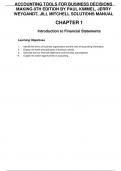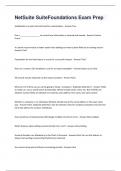Exam (elaborations)
ACCOUNTING TOOLS FOR BUSINESS DECISIONS MAKING 8TH EDITION BY PAUL KIMMEL, JERRY WEYGANDT, JILL MITCHELL SOLUTIONS MANUAL
- Course
- Institution
ACCOUNTING TOOLS FOR BUSINESS DECISIONS MAKING 8TH EDITION BY PAUL KIMMEL, JERRY WEYGANDT, JILL MITCHELL SOLUTIONS MANUAL
[Show more]




